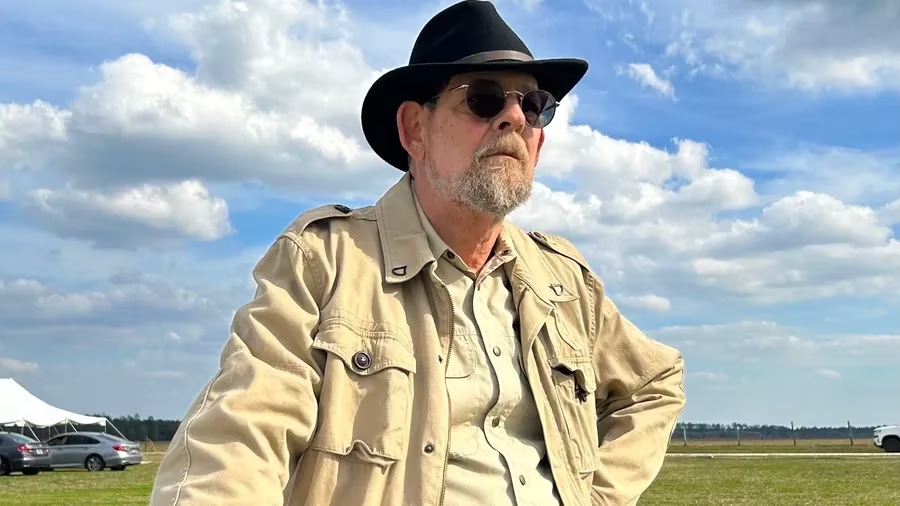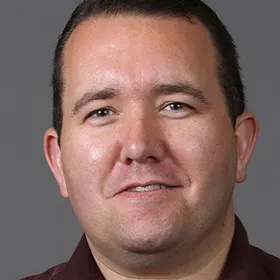This article was first published by the Tampa Bay Times and is republished here with permission.
STARKE — When reporters shuffle into Florida State Prison to cover an execution, they’re given a notepad and two pencils to take notes, and maybe a bit of an education from John Koch.
Koch said he remembers that when Florida still used the electric chair known as Old Sparky, the pencils carried the brand name “Sparco.” After the state switched to lethal injection, he says, the pencil brand changed to “Velvet.” Koch pointed out the irony to a few corrections staffers. Thereafter, their pencils bore no consistent brand names.
Such trifling changes to a macabre routine are the sort of thing Koch is uniquely qualified to notice and remember.
A radio journalist since the 1970s, he has been a press witness to Florida executions since 1989. By his count, he has seen 81 of them. The tally includes 25 who died in the electric chair, and 55 who were killed by lethal injection. Two were women. A handful were botched.
The work, he said, is no hobby.
“The reason I do this,” he said, “is that I do a damn good job in 38 seconds to tell you what the state is doing in your name.”
‘Dr. Death’
At 73, Koch — pronounced like Coke — is something of a relic.
He’s an old-fashioned local radio newsman in an era where few remain. Some might say the punishment he has documented so thoroughly is also a relic. Koch says he’ll keep reporting on it until he’s told he can’t anymore.
Those who know him describe him as eccentric and a bit of a hippy. He credits a stint in the U.S. Army in the late 1960s with giving him an emotional armor against things unpleasant.
He’s based near Live Oak, a city of roughly 7,000 about 40 miles south of the Georgia state line in north central Florida.
These days he’s a fill-in guy at WQHL, a collection of six AM and FM stations broadcasting in Hamilton, Lafayette and Suwannee counties.
He also runs an online publication, dubbed Independent News Services. He tells his readers about who is running for local office and reports the results of elections. He keeps a watch on the local county governments, school boards and sheriffs.
And, once in a while, he drives about an hour east to deliver a detailed report whenever the state takes a life.
“We nicknamed him Dr. Death,” said Wayne Littrell, the program director for WQHL. “He’s a throwback. He’s an old-fashioned radio reporter.”
The Department of Corrections reserves 12 seats in the witness room for the press, with five print journalists selected by the Florida Press Association and five others selected by the Florida Association of Broadcasters. The other two spots are permanently reserved for the Associated Press and the Florida Radio Network.
Koch typically writes a short script. He records on an iPhone, or sometimes does live reports by phone from outside the prison.
Few journalists have seen what Koch has. But there are others like him.
Michael Graczyk, a longtime reporter for the Associated Press, witnessed more than 400 executions in Texas.
Ron Word, a former AP reporter in Jacksonville, now retired, covered 62 in Florida, starting in the mid-1980s. Koch was there with him for most.
“He’s kind of offbeat,” Word said. “I know he worked hard.”
Koch’s first was Ted Bundy. He says he was there when Bundy’s last victim, 12-year-old Kimberly Leach, was found in 1978 in an abandoned shed in Suwannee River State Park.
He remembers the scene one early morning 11 years later in a grassy field across the road from Florida State Prison. A reveling crowd set up barbecue grilles, carried signs exclaiming “burn, Bundy, burn,” and cheered when word came that the serial killer was dead.
“It was a circus,” Koch said.
Koch can be seen in old TV news coverage of the execution, available on YouTube. A Seattle-based news station misspelled his surname as “Couch.” But the bearded man with round sunglasses and a broad-brimmed hat is unmistakable.
“You knew he was dead when you saw the extremities turning blue,” Koch told the station.
He kept coming back.
A raw historical record
One breezy afternoon last month, Koch pulled his two-door Honda onto a grassy field about a quarter-mile from the execution chamber at Florida State Prison. He spread a blanket on the ground and hauled a cardboard box from the car. Inside it were manila envelopes, each labeled with the names of the condemned and the dates they died.
The lined pages tucked inside bear his pencil scratches, a raw record of a dark piece of Florida history.
“I think there’s a book in there somewhere,” he said.
One envelope bears the words “flame out” and the name of Pedro Medina, whose botched execution in 1997 spurred calls to retire the chair.
“Smoke & flame heavy,” his notes read. “Smoke filled chamber. Visible reaction & guards open window to remove. Flames 6 in high. Smoke evenly dist. throughout chamber.”
His notes mention that Medina showed little reaction, a witness’s comment that he was still breathing, and the smell that seeped into the witness room.
The state kept using the chair.
His notes from the 1999 execution of Allen Lee Davis, a 300-pound man known as “Tiny,” describe a red spot appearing in the center of Davis’ chest. As it grew bigger, it became obvious that it was blood soaking his shirt. It would later be surmised that the electric jolt gave Davis a nosebleed.
“Appeared to be breathing slightly even after being declared dead,” Koch’s notes read.
No one has died in Florida’s electric chair since.
As much as he saw the horrors of the chair, Koch said the execution that bothered him most was the first that occurred with lethal injection. The condemned, Terry Sims, died quietly. But afterward came the executioners, who entered the chamber wearing what Koch remembers were blue suits, like Haz-Mat uniforms.
Something about those outfits, which apparently were meant to conceal their identities, summoned nightmares about men Koch calls “blue meanies.”
The suits eventually were removed from the process. Most lethal injections Koch has seen since were like watching a person drift into sleep.
He remembers Aileen Wuornos, the female serial killer, whose life was the basis for the movie “Monster.” Before she died, Wuornos, whose mental health was questioned in court, predicted her return “like Independence Day with Jesus, June 6, like the movie, big mothership and all.”
“God, she was weird,” Koch said.
He remembers Paul Jennings Hill, the anti-abortion activist who was put to death for murdering a doctor who performed abortions and the doctor’s bodyguard.
“There was almost a smile on his face as his life slipped away,” his notes state.
As it happened, a thunderstorm brewed outside.
“Biblical,” Koch said.
When he covers these things, Koch said he goes to a “dark place.” Also, though, he speaks of a sense of duty and public service.
It worries him that fewer journalists turn out these days to cover executions. In the old days, all the seats were routinely taken. Koch became concerned a few years ago when, he recalls, one execution was attended by only two reporters, including him.
“I would be comfortable if we got five or six, but not two or three,” he said. “That bothers me because that’s a lot of responsibility on my shoulders.”
On Feb. 23, he was one of four. They arrived in the execution chamber a little before 6 p.m. and filed into the last of four rows of chairs to wait with other witnesses. As a curtain rose, and Donald Dillbeck uttered his last words, the only sound was the drip of an air conditioning unit and the scribbling of pencils against paper.
Number 81 in the books.







